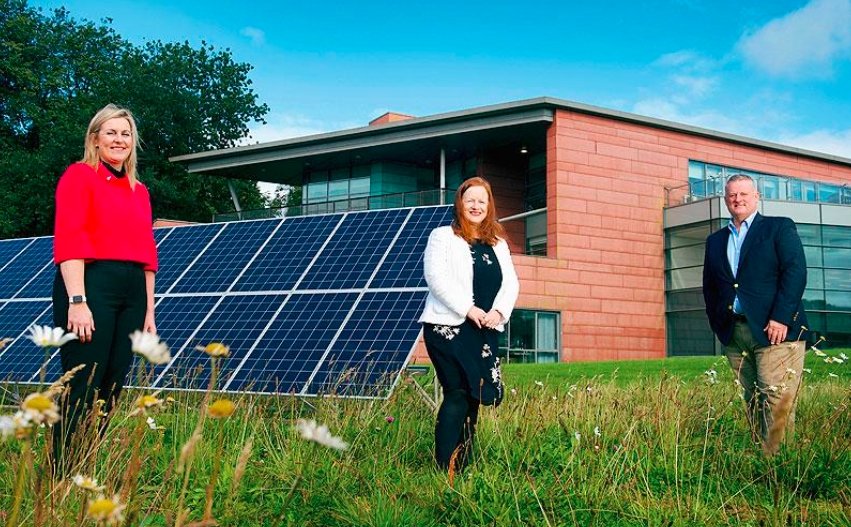A bold new vision for how the South of Scotland could heat its homes—and rewrite its economic future—has been launched with the unveiling of the region’s first Heat Networks Prospectus.
Developed jointly by South of Scotland Enterprise (SOSE) and the councils of Dumfries & Galloway and the Scottish Borders, the document outlines 19 potential heat network zones across southern Scotland. These networks, if realized, would collectively supply up to 120,000 megawatt hours of thermal energy per year to more than 2,400 domestic and non-domestic properties.
It’s the most comprehensive heat infrastructure vision ever set out for Scotland’s southern rural heartlands—and it comes with a hefty projected capital cost: £120 million.
What Are Heat Networks?
Heat networks—or district heating—work by distributing thermal energy from a central source to multiple buildings. Think of them as low-emissions central heating, but at scale. They can be powered by various sources: biomass, heat pumps, industrial waste heat, or geothermal.
Two main types are in play:
-
District heat networks: typically larger and deployed in town centres or industrial clusters.
-
Shared heat collector networks: smaller-scale systems suited to villages, streets, or new housing developments.
The South of Scotland prospectus identifies seven district-level sites in urban areas including Dumfries, Stranraer, Melrose, Galashiels, Peebles, and Hawick. A further 12 shared collector network sites are proposed in rural communities like Langholm, Crossmichael, Tweedbank, and Smailholm.
A Turning Point for Rural Energy Strategy
While much of Scotland’s renewable energy focus has centred on offshore wind and hydrogen hubs in the Highlands and Islands, this prospectus is a quiet attempt to reposition the South as a pioneer of heat innovation.
“This highlights the massive potential for heat networks in the South of Scotland, providing heat for low cost and with lower environmental impact,” said Russel Griggs OBE, Chair of SOSE.
For a region often overshadowed in major infrastructure decisions, it’s also a play for investment. SOSE and local authorities are now actively seeking public and private partners to finance pilot schemes and unlock larger rollouts over the next decade.
Fighting Fuel Poverty, Creating Jobs
The stakes go beyond carbon emissions. Officials say heat networks could be a game-changer in the fight against fuel poverty—a persistent problem in parts of southern Scotland, especially in off-gas-grid communities.
“Heat networks offer a real opportunity to decarbonise heating, reduce carbon emissions, tackle fuel poverty, and create new jobs and skills,” said Councillor Stephen Thompson, leader of Dumfries and Galloway Council.
Indeed, advocates argue that investing in local energy infrastructure retains more wealth within the region, reduces dependency on volatile energy imports, and builds community resilience. Many of the network proposals are near schools, hospitals, or council housing stock—offering the chance to bundle social value into technical infrastructure.
A Complex Sell?
Still, barriers remain.
Heat networks—though common across Scandinavia and parts of Europe—have struggled to gain traction in much of rural Britain. They are technically complex, require heavy upfront investment, and need political and public buy-in to secure land rights, building connections, and maintenance support.
In England, several pilot heat networks launched in the 2010s have stalled due to funding gaps or policy shifts. Scotland, however, now has its own Heat Networks (Scotland) Act 2021, giving local authorities more powers to zone, regulate, and even compel connections in certain cases.
The South of Scotland project will be a major test of this framework in a semi-rural context.
Local First, Scalable Later
Notably, the authors of the prospectus frame it not as a grand national blueprint but as a local-first, replicable model. While the document identifies 19 locations, officials stress that similar collector-style networks could be applied in “many other towns, villages, streets and new developments” not listed in the report.
The flexibility of the shared collector model means it can grow organically—network by network, neighborhood by neighborhood.
To build momentum, a series of community webinars and regional events will be held throughout the summer to attract stakeholders and funding partners. Early adopters will likely include council facilities, social housing providers, and new housing developers keen to meet low-carbon targets.
Scotland’s Energy Map Redrawn?
As Scotland pursues its 2045 net-zero goal, heating—responsible for more than half of national energy demand—remains one of the biggest policy challenges.
If successful, the South’s approach could reshape how decarbonised heat is delivered across more remote and rural parts of the UK—places often left behind in national infrastructure plans.
For the South of Scotland, long known for its landscapes and livestock, heat networks could mark the start of a quieter revolution—one powered by local energy, technical innovation, and grassroots climate ambition.


















